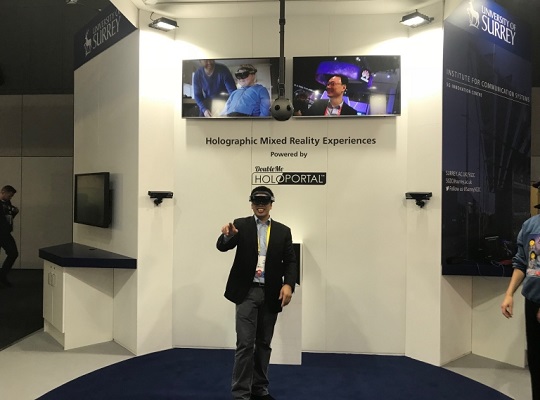To those who have seen any Star Wars movies, holographic communications is a very common thing, almost reality. However for those like me that grew in the era of the first 3 Star Wars movies, during that time holographic communications is pure fiction.
Back in 1991 I have written a university thesis for holographic communications, like any telecom gadget then my design was big and bulky, consumes a lot of power and requires a huge bandwidth and high speeds which during that time were impossible to achieve in a mobile network. Holography is of course nothing new in 1991, it was first developed by accident in the 1940’s by Dennis Gabor on works derived from X-ray microscopy. In its heyday, holograms were created using lasers to render the fully 3-dimensional image seen by the naked eye. The processing required to record a holographic image is in the order of Terrabits per second, transmitting that cover a radio network in 1991 seems impossible, my University professor even told me that holographic communication will never be achieve in our lifetime. Yet here we are, less 30 years later, full holographic communications is almost possible in mobile networks while partial holographic communications is now possible with the use of Hololens.

Ian Vernon, AWTG’s Head of Technology, trying the Hololens at the 2018 Mobile World Congress
With the advent of 5G, the dawn holographic communications has arrived. By 2021, 5G will start to penetrate the market giving consumers the first hand experience of mixed-reality communications. Today mixed reality applications using holograms are very limited to static images, 3 to 5 years from now with the improvement in compression and ever increasing speeds of mobile networks we will start to see some form of holographic communications starting with static images and later progressing to dynamic images. Microsoft so far is leading the charge to the world of mixed reality through its Hololens technology, other companies are not far behind, even Time Warner has invested in hologram-based companies. Companies like Double Me are creating applications based on the Hololens to offer mixed reality experiences and have demonstrated holographic communications over 5G in the 2018 Mobile World Congress powered by the 5GIC network.
The coming years will be very exiting for mobile communications, with 5G we will be seeing speeds up to 1Gigabit per second. With such transmission speeds there will me more immersive applications that will be developed that will give us a much better mixed reality experience than we do today.
